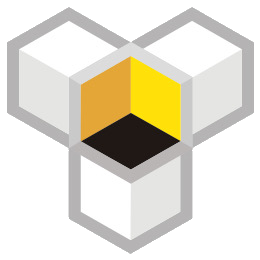Site Group Collection Database and Data Collection Site
1. The Concept and Function of Website Group Collection Database
A website group collection database refers to the establishment of multiple website clusters, using web crawler technology to collect a large amount of data from the Internet and store this data in a database. The website group collection database can be a systematic data collection project that accesses multiple websites and pages simultaneously to acquire and organize target data.
Data Acquisition and Organization
The main function of a website group collection database is to acquire and organize a large amount of data. Through web crawler technology, website groups can automatically access target websites, extract interested data, and organize and store it in the database. These data can be in the form of text, images, videos, links, and other types of information.
Data Analysis and Application
A website group collection database provides a wealth of data resources, laying the foundation for data analysis and application. By cleaning, processing, and analyzing the collected data, patterns, trends, and correlations in the data can be identified. This helps with market research, user behavior analysis, competitive intelligence collection, and supports decision-making and strategic planning.
2. Definition and Function of Data Collection Station
Definition
Data collection station refers to a website used to collect data. It is the foundation of the station group collection database. By accessing the target website through web crawling technology, it extracts the required data and stores it in the database. A data collection station can be a single website or a station group composed of multiple websites.
Function
Data Crawling: The data collection station automatically accesses the target website through web crawling technology and retrieves the data of interest. Depending on the requirements and objectives, it can collect different types of data such as web content, images, videos, comments, and more.
Data Parsing: The collection station parses and extracts the collected data, extracts the target data, and structures and organizes it. This helps in subsequent data processing and analysis work.
Data Storage: The collection station stores the parsed and extracted data in a database for subsequent data analysis and applications. The database can be a relational database, a non-relational database, or other technologies suitable for storing large amounts of data.
Data Cleaning and Processing: The data collected by the collection station is cleaned and processed to remove noise and duplicate data, correct format errors, and missing values. This helps improve the quality and accuracy of the data.
Data Updating and Maintenance: The collection station can regularly update and maintain data to ensure its timeliness and integrity. Through incremental updates and scheduled tasks, the latest data can be obtained in a timely manner and updated in the database.
Challenges and Considerations for Data Collection Stations
Legal and Ethical Issues: When collecting data, it is necessary to comply with relevant laws, regulations, and ethical standards. Respect the website's privacy policy and terms of use, avoid infringing on others' legitimate rights, and pay attention to the protection of personal data and privacy security.
Crawler Strategies and Restrictions: Websites typically have crawler strategies and restrictions to prevent excessive access and misuse of data. When collecting data, it is necessary to comply with the website's crawler rules, and reasonably control the access frequency and concurrency to avoid causing excessive load on the target website.
Data Quality and Accuracy: The data collection station needs to ensure the quality and accuracy of the collected data. Attention should be paid to data deduplication and cleaning to remove duplicate and erroneous data. Also, focus on the reliability of data sources and the consistency of data collection to ensure the accuracy and credibility of the data.
In summary, the cluster collection database is a method of establishing multiple website clusters, using web crawling technology to collect a large amount of data from the Internet, and storing it in a database. The data collection station is a website used to collect data, access target websites through web crawling technology, extract the required data, and store it in a database. The functions of the data collection station include data capturing, data parsing, data storage, data cleaning and processing, as well as data updating and maintenance. When conducting data collection, it is necessary to comply with legal and ethical standards, pay attention to crawler strategies and restrictions, and ensure data quality and accuracy. The application of cluster collection databases and data collection stations contributes to data analysis and applications, supporting decision-making and strategic planning.

